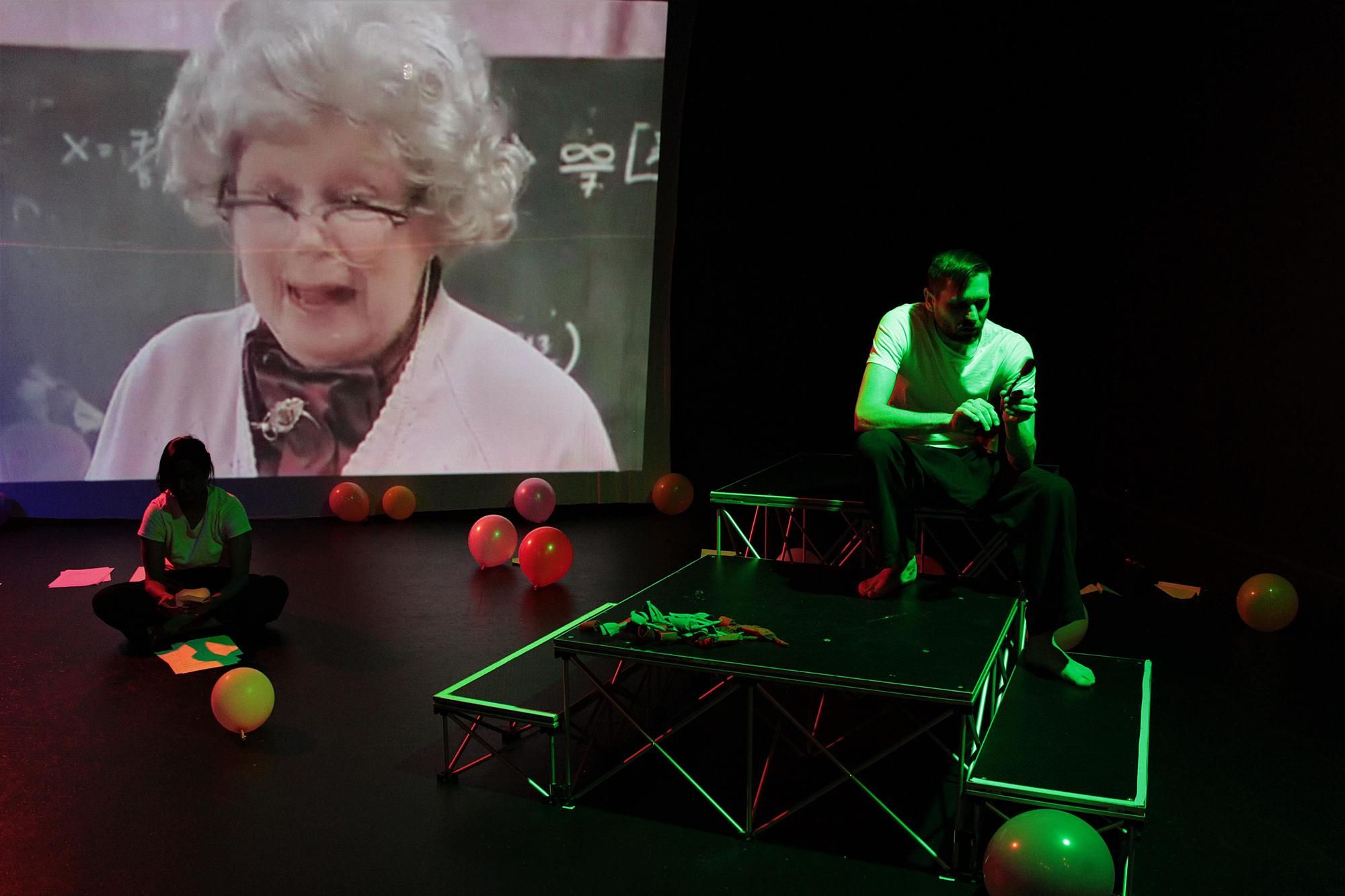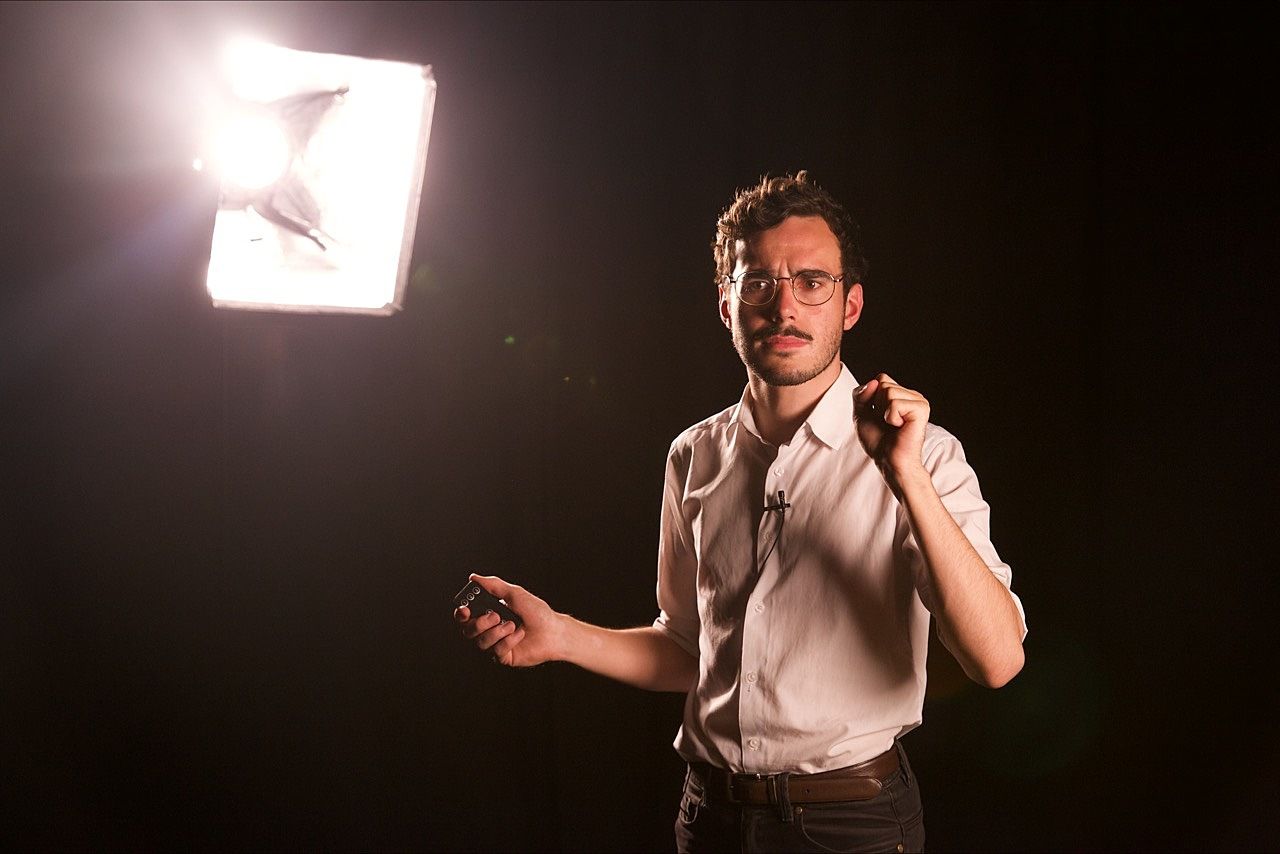Playing it Safe: How We Use Trigger Warnings in Theatre in Aotearoa
Catherine Hart steps back from the overwhelming online discourse machine and looks at trigger warnings, content notes and emotional safety in theatre in Aotearoa: how are we using them, how could we use them better, and what's the roadmap for getting there?
Catherine Hart steps back from the overwhelming online discourse machine and looks at trigger warnings, content notes and emotional safety in theatre in Aotearoa: how are we using them, how could we use them better, and what's the roadmap for getting there?
Picture this: you're watching a sold-out production by an up-and-coming Kiwi playwright. Things are getting violent onstage. This makes you slightly uncomfortable, but not so uncomfortable that you leave. You think to yourself, "Was this in the blurb? Did I miss a warning at the door?" As you try to remember, the action’s gotten more abusive. The actors are good and you’re impressed, but your breathing quickens anyway and you begin to shake. Then there’s a loud noise and a sudden burst of light and you involuntarily jump.
Your friend sitting next to you doesn’t seem to have noticed that you’re having a panic attack. Should you nudge them and let them know? Maybe you could leave, past the strangers sitting in your row? But then you might ruin their experience...So you bear with it, gripping your seat and remembering to breathe. When the show finishes, you run to the bathroom and collect yourself. Thankfully, no one’s noticed what you've just gone through.
I can't remember which show this happened in. Honestly, it's happened too many times to count. Perhaps you’ve gone through a similar experience. When it’s happened to me, though, I know I could have benefited from a trigger warning in the programme or a content note at the door. I could have been prepared.
The concept of a trigger has roots in early-20th-century studies of the emotional effects of combat stress disorder. Psychologists like Abraham Kardiner studied the effects of war trauma during peacetime in America; by the 1980s PTSD had been recognised by the American Psychiatric Association, listed in the third edition of the Diagnostic and Statistical Manual of Mental Disorders. Following that recognition, psychologists conducted further research into the effects of different 'triggers' like sounds, physical locations, or even people.
Trigger warnings are warnings designed to highlight to audience members that what they’re about to watch or read or hear has specific material that could negatively set off one of those triggers, and they’ve become a common encounter in everyday life. They are at the beginning of articles, at the top of your Netflix screen, on the poster for the film you're about to see, on the syllabus of your university course, and sometimes even at the beginning of conversations. They’re a hot topic on the internet: they were first used in the late 1990s, usually on feminist message boards and prefacing fanfiction, and are now commonly discussed in outlets like The Guardian, Buzzfeed and Onstage Blog.
Trigger warnings are also increasingly popular in our theatres, though it’s difficult to tell when these warnings first appeared since our theatres typically don’t record their use. Sasha Tilly, Logistics Manager at the New Zealand Fringe Festival, believes that these warnings have come into use in the last five years, and Gabrielle Vincent, Programming Manager at Auckland’s Basement Theatre, says that there has been a noticeable increase in trigger warnings used in this last year alone.
...[Vincent] says that there has been a noticeable increase in trigger warnings used in this last year alone.
Warnings can take many forms in theatre: on the website of the venue or ticketing agency, on a flyer or programme, on a physical sign before you enter the theatre, mentioned by venue staff at the box office or as you’re being seated, or even declared at the start of the show. The idea is always that if you miss one of these warnings, perhaps you will see or hear another.
Theatres can also use content notes, which are less prescriptive in terms of describing how the material could affect audience members. For example, if a warning refers to specific triggers there that the warning might actually unintentionally trigger an audience member, the opposite to a warning’s purpose. As such, content notes are often preferred by those who benefit from warnings. Personally, while I haven’t experienced trauma that has given rise to the development of specific triggers, I still have violent physical and emotional reactions to certain topics. Because of this, content notes are more useful to me and address my experiences better.
Warnings are usually created by a production company when developing promotional material. It often falls to a production’s producer or director to make decisions on how to implement any necessary warnings. These decisions can include what the warning highlights, how the warning is worded and whether supporting materials need to be provided to audience members. This will then be sent on to the venue or festival the show is a part of and included on event listings.
Warnings can also be prompted by the venue staff in preparation for opening night. Vincent says that at the Basement Theatre, “We ask every artist that comes through our space about certain content [such as abuse, sexual violence, mental health] that their shows might include.” This is done via email a week or so prior to a show. If the warning is created in this way, it’s more likely that the venue, rather than the company, will decide how to word the warning.
Audience members can also request a warning to be put in place after they have already watched the performance. Eleanor Strathern, an independent producer and the Box Office Manager at Circa Theatre, says that in her time working in box office she’s noticed that it’s far more likely that audience members will ask for a warning post-show than complain that one exists. From an audience perspective, then, these warnings are becoming increasingly necessary.
Warnings and notes are not solely aimed at audiences. They also protect venue staff, technicians working the show, the show’s performers and the other creatives involved in the process of forming the work. Theatres in Aotearoa go to differing lengths to inform their staff about these warnings. For example, at Auckland’s Q Theatre all staff are notified if a show contains material that might be upsetting. The front-of-house staff are briefed and even provided with an opportunity to opt out of their shift if necessary. In an industry where we are still learning how to look after professional theatre workers, this is a step in a positive direction.
Warnings and notes are not solely aimed at audiences. They also protect venue staff, technicians working the show, the show’s performers and other creatives...
Everyone has an opinion on whether these warnings are necessary, or ultimately counter-productive to the free and unrestrained creation of art. For example, essayist and novelist Roxanne Gay denounced trigger warnings in her 2012 article for The Rumpus, The Illusion of Safety/The Safety of Illusion. "It is untenable to go through life as an exposed wound,” she wrote. “No matter how well intended, trigger warnings will not staunch the bleeding; trigger warnings will not harden into scabs over your wounds."
It's also common for artists to worry about using audience warnings. Tilly tells me that artists often don’t want to put any kind of trigger warning on their work, “because they do feel like it might deter audiences." Strathern echoes that. She says that she’s previously felt nervous entering shows with long lists of warnings. "I've been to a couple of shows where the show warnings have been really full on,” she says, “and I've been sitting there quite anxious in myself, waiting for something horrible to happen...that caused me unnecessary anxiety."
Gay is right that trigger warnings will not scab over your wounds, but theatre can tear open wounds that are already beginning to scab. It's live and visceral and in your face. In those situations, the presence of a warning can lessen the pain, or at least prepare you for it. “It’s about the pastoral care of audiences,” Tilly says. “And I think we are [also] trying to be better at the pastoral care of artists and performers.”
Borni Te Rongopai Tukiwaho is the director of Taurima Vibes, a community-based performance company with “a strong focus on wellbeing, mental health awareness, destigmatising negative social perceptions and creating strong connections.” Tukiwaho says that trigger warnings can be done, “in such a succinct and concise way so that people can understand…[that] they have the option to make a decision before they walk in.” It’s not about censoring material or “taking away from an artist’s voice,” he says; rather, it’s about knowing how to treat your material with tact and respect. It’s about finding the difference between saying, “this is triggering material,” and, “this contains material that some could find triggering.”
This might seem like getting caught in semantics, but there is a difference for people dealing with emotional hardships and trauma. Being kind and respectful to your audience is the key, rather than expecting them to be solely responsible for their own emotional reactions (to your work) at all times. It lies “around the understanding of what is possible,” Tukiwaho says, “what your actions can do to somebody else.”
According to many of the artists and venue managers I spoke to, artists creating new work are also often concerned that a warning could contain spoilers or reduce the shock factor that their performance is aiming for. Martyn Roberts, Theatre Manager at the University of Otago’s Allen Hall Theatre, says that writing a warning is often about finding the line between providing the best information while not giving the game away.
...trigger warnings will not scab over your wounds, but theatre can tear open wounds that are already beginning to scab.
All of these concerns have one thing in common, a thing that kept coming up when speaking with artists and venue managers: there is no guideline for how to use trigger warnings or content notes. This means that the warnings we encounter are varied, sometimes presenting the most important information in limited or irrelevant ways.
For example, I managed a venue during the 2017 Edinburgh Fringe Festival. One of the productions at this venue had seven content notes; due to the nature of the venue (and the fact that it was during the craziness of Edinburgh Fringe Festival) I believed the best way for me to get this information across was to yell it while the audience was entering the theatre and I was collecting their tickets. We still received complaints about the show, proving that this was an inefficient process.
So how are we supposed to know how to approach these warnings when creating work? It's important to be aware of potentially triggering or upsetting material in the work we’re making and of how prominent those themes or content are. For example, there is a difference between discussing sexual violence during a scene and presenting a performance of it onstage, and your warning should reflect this. You know your show better than anyone but everyone is affected differently by different triggers. To provide an informed and relevant warning, then, ask others for advice whenever possible and be precise about exactly what you need to get across to your audiences.
When it comes to writing the warning or saying it out loud, try to keep it simple. Don't list off every theme that could possibly be triggering: try to give a more succinct warning. For example, rather than detailing every act of violence in a show, write, “This show contains violence – please see venue staff for further information,” and ensure that venue staff are equipped with the necessary information should they be asked by an audience member. It's also a good idea, if appropriate, to leave support material in the foyer or with staff for after the show.
It’s also important to know the weight that a warning carries and to make sure that a warning isn’t unnecessarily intimidating to audience members. Strathern tells me that if she’s putting together a warning for content that is less emotionally distressing – loud noises, for example – she will often include a joke warning to keep the language from seeming aggressive and ‘preachy.’ For example, in the warning for the TED Talk parody WMBADx: Ideas Worth Spreading, Strathern added a joke that the piece contained “boring material.” This acknowledged that the material that needed a warning was less emotionally distressing than content that would traditionally attract a warning, she says. “I'm less likely to do that if it's dealing with actual social issues. So if it's dealing with violence, I wouldn't [make a joke of it]."
No theatremaker is able to predict exactly how their audience will react to their show. Even so, we should always be aiming to create positive audience experiences. There may be no clear guidelines yet, but as a community we need to engage in the discussion around the relevance of and necessity for warnings. If we continue to talk, and to listen, we will only get better at dealing with this complicated aspect of producing shows; with time, we may even have clearer, more focused guidelines to help us write and use warnings.
In the meantime, though, we need to listen to and respect our audiences, and provide them with autonomy over their experiences. As an individual who experiences panic attacks brought on by triggering material, I have the utmost respect for any production, company, or individual artist who makes an effort to get it right. The effort proves you care, and that’s the kindest gift you can offer an audience.
Header image: Anjula Prakash and Ben Moore in Breathe, BATS Theatre, 2018. Photo credit: Gemishka Chetty.
The writer would like to thank Eleanor Strathern, Sasha Tilly, Gabrielle Vincent, Martyn Roberts, Snap at Grandpa Figgs, Borni Te Rongopai Tukiwaho, Sarah Graham, Kate Barnes and Daniel Goodwin for contributing to this piece.






